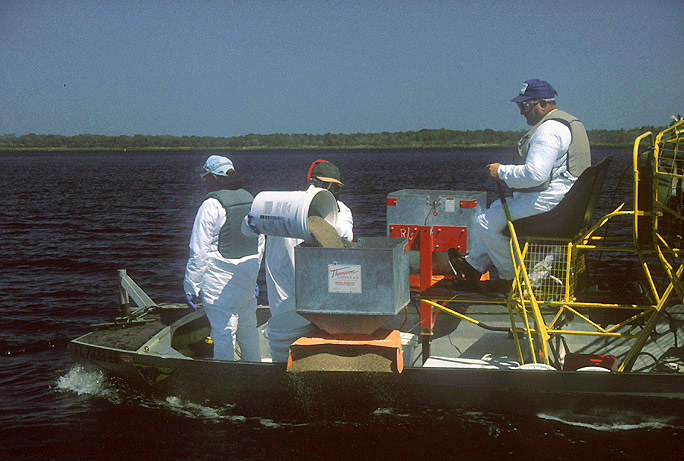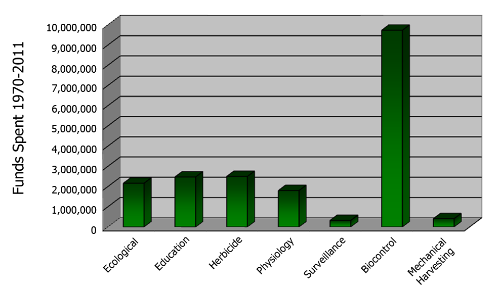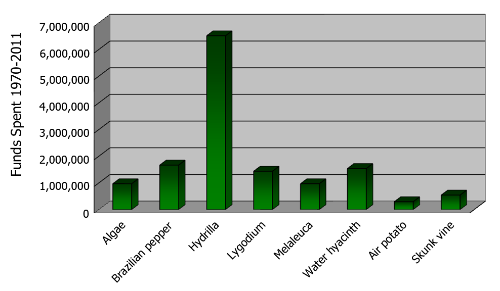Invasive plants degrade and diminish Florida's conservation lands and waterways. Some invasive aquatic plants pose a significant threat to human welfare by impeding flood control, navigation, and irrigation of agricultural lands. They also can hinder recreational uses of waterways.
Scientific research for invasive plant management is critical for finding more cost-effective and long-lasting control methods. Present research targets biological control methods using insects, fish, and plant pathogens in the hope of finding and releasing host-specific biocontrol agents that can provide good, self-sustaining control results. Because plants can develop resistance or tolerance to existing herbicides, FWC research also focuses on developing and testing new, safer, and selective herbicides, herbicide combinations, and management strategies to avoid or prolong the development of resistance in treated plant populations.
One of the major lessons learned over the years is that aquatic plant management is a complex endeavor. To control invasive aquatic plants and conserve Florida’s public waters, managers must frequently assess and adapt to ever-changing weather conditions, new plant introductions, and new control methods, along with herbicide resistance issues, federal and state legislative policies, budget shortfalls, stakeholder expectations, and many other factors. Good scientific research is one of the key factors for successful aquatic plant management in Florida. And there must be a strong commitment to providing new scientific research information to the appropriate stakeholders.
Algae are in the plant kingdom, but technically they are not plants. A diverse group of organisms, algae survive in even the harshest habitats. From the dry desert, to the Arctic Circle, to boiling springs, these organisms have found a way to extract enough from their environment to live. Algae range in size from microscopic to meters long and from single-celled to complex organisms that rival large plants. These organisms may look like true plants, but unlike plants, algae do not have roots or true stems and leaves. In Florida's freshwaters, algae are what make the water green. Green water is not necessarily undesirable, and neither are algae. In fact, algae are essential to the ecosystem and to life as we know it. Algae are a primary component of the food web, providing food for all types of animals, including fish, insects, mollusks, zooplankton (microscopic animals), and humans. There are microscopic algae, like phytoplankton; and there are macroalgae, visible to the naked eye. Algae occur naturally in all types of systems and can indicate the condition of an ecosystem. The mere presence of a species can indicate the amount and type of nutrients present.

The Florida Fish and Wildlife Conservation Commission (FWC) Invasive Plant Management Section (IPMS) has funded research to support management programs for invasive plants for several decades (read more information about funding). Because of ever-changing environmental and economic conditions, Florida’s management strategies must be continuously adapted and improved. Since 1970, the IPMS has spent more than $22 million on approximately 200 research projects. Emphasis has been on exploring and improving biological control methods and searching for new herbicides and improved strategies for chemical control methods. Figures 1 and 2 show the amount spent on different invasive plant species and research categories. Research is contracted primarily with Florida universities and the United States Department of Agriculture, but also with out-of-state institutions when time or expertise is not available within Florida.
 Research funds spent by research category from 1970-2011 |  Research funds spent on plant species from 1970-2011 |
|---|